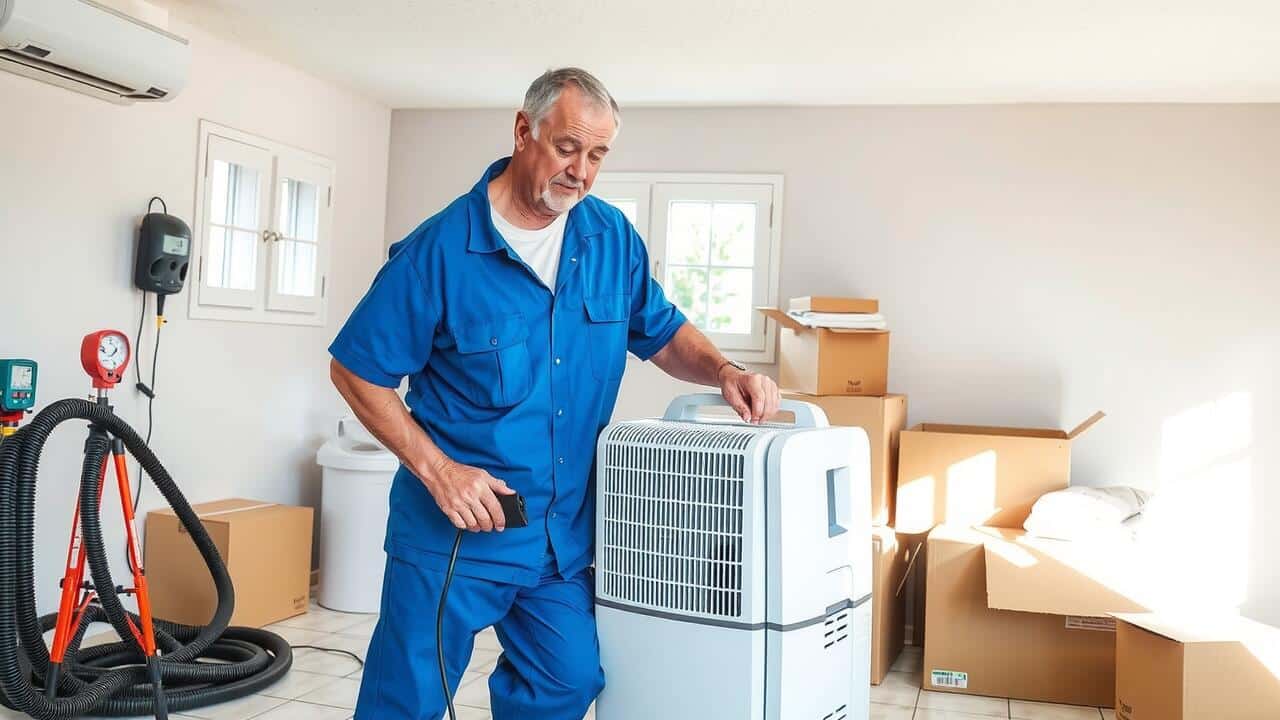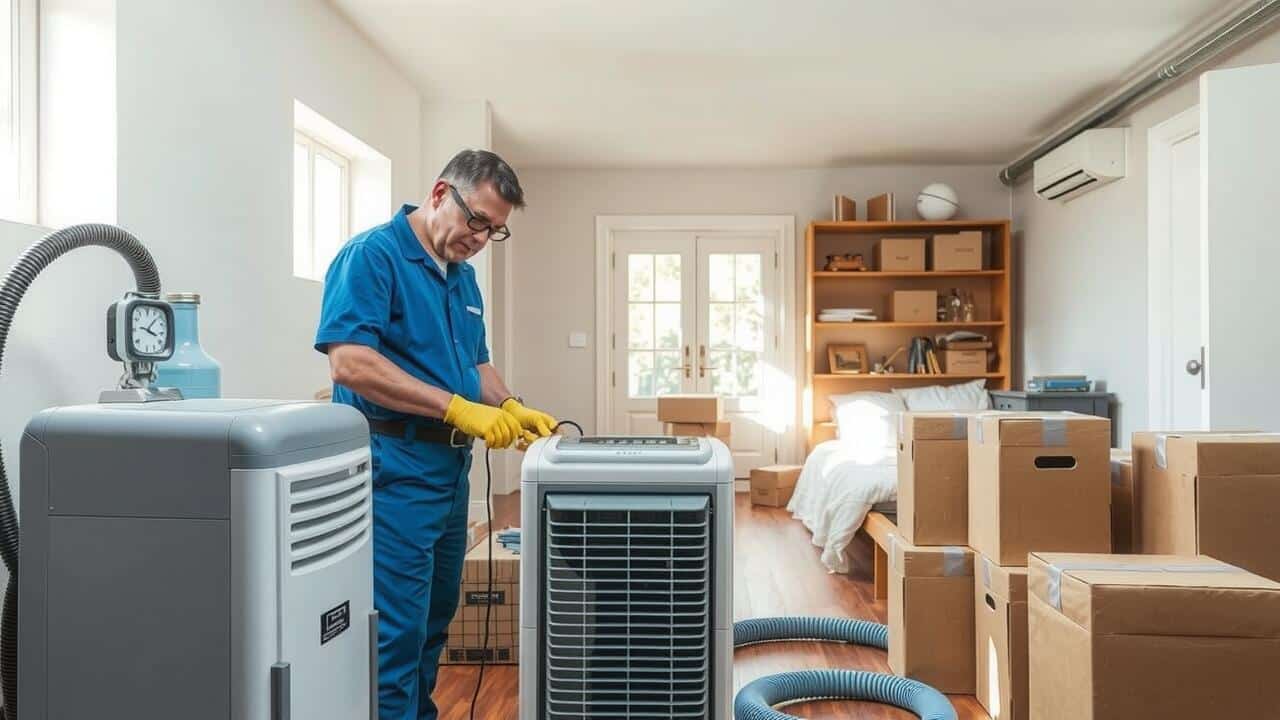
Table Of Contents
The Dehumidification Process in Detail
Dehumidification involves the removal of excess moisture from the air. This process helps maintain a comfortable indoor environment and prevents problems like mold growth and respiratory issues. Typically, a dehumidifier draws in humid air, cools it, and condenses the moisture. The dried air is then released back into the room, effectively lowering humidity levels.
When searching for a dehumidifier, many people may type “Dehumidification near me” into online search engines. This indicates a preference for local solutions, which can lead to quicker service and installation. Local retailers often provide a range of options, along with expert advice tailored to specific needs, such as room size and humidity level.
Step-by-Step Guide to Effective Dehumidification
The first step in the dehumidification process involves assessing the area that requires moisture removal. Identify spaces prone to humidity, such as basements, bathrooms, or laundry rooms. Measure the humidity level using a hygrometer to determine the extent of the problem. This data will guide your choice of dehumidification equipment, whether portable units or whole-home systems. If you search for “Dehumidification near me,” you may find local resources that provide equipment rental or purchase options.
Once the appropriate system is selected, position the dehumidifier in an optimal location for airflow. Ensure it has ample space around it to function effectively. Regularly check the water collection bucket or drainage system to avoid overflow and maintain efficiency. Clean the filters and coils as needed to promote optimal performance. Keeping these practices in mind will not only enhance the device’s effectiveness but also prolong its lifespan.
Choosing the Right Dehumidification System
Selecting the right dehumidification system involves understanding your specific needs and the environmental factors in your space. Start by assessing the area’s size, humidity levels, and the purpose of dehumidification. A larger space may require a more powerful unit or multiple devices. It’s also important to consider the climate; regions with high humidity levels may need a more robust system compared to drier areas. Researching options labeled for residential use can simplify the decision-making process.
When searching online, use keywords like “dehumidification near me” to find local suppliers and reviews from other customers. Additionally, consider the energy efficiency of the unit, as this will impact operational costs over time. Features such as built-in humidistats, continuous drainage options, and noise levels may also influence your choice. Take time to compare different models and read manufacturer specifications to ensure you select a system that meets your long-term needs effectively.
Key Considerations for Selection
When selecting a dehumidification system, consider the size of the space requiring dehumidification. This influences the capacity needed for effective moisture removal. Larger areas typically require units with higher dehumidification capacities, while smaller spaces can be adequately serviced by compact models. Assessing the humidity levels and the frequency of use will help determine the best fit for your needs.
Energy efficiency is another crucial factor in your selection process. Look for models that have the ENERGY STAR label, as these units will not only help reduce energy consumption but also lower utility bills over time. Additionally, consider the noise level of the device, especially if it will be placed in living areas. Researching local options online with keywords like “dehumidification near me” can yield helpful results and reviews from users in your area.
Maintenance of Dehumidification Devices
Regular maintenance of dehumidification devices is essential to ensure optimal performance and longevity. This includes emptying the water reservoir frequently if your unit does not have a direct drainage option. Dust can accumulate on filters and coils, leading to reduced efficiency, so it’s important to clean or replace filters as needed. For many users, searching for “dehumidification near me” can help identify local services that specialize in maintenance and repairs.
In addition to cleaning and filter maintenance, checking the unit’s settings periodically is crucial. Adjusting humidity levels based on seasonal changes can enhance efficiency. Inspecting the power supply and ensuring the unit has adequate airflow contributes to better performance. For those who might not be comfortable with hands-on maintenance, consulting a professional from a nearby dehumidification service can provide peace of mind and ensure that your device operates effectively.
Tips for Keeping Your Dehumidifier Functioning Well
Regular maintenance is crucial for ensuring that your dehumidifier operates efficiently. Start by cleaning or replacing the filter according to the manufacturer’s recommendations. Many models have washable filters, which should be rinsed periodically to prevent dust and mold buildup. Additionally, inspect the water collection tank for any signs of mildew or slime, as this can negatively impact air quality. Checking the unit for proper ventilation can enhance its performance and prevent overheating, which may lead to early equipment failure.
Positioning the dehumidifier in the right location also plays a significant role in its effectiveness. Ideally, place the unit in areas where moisture accumulates most, such as basements or laundry rooms. If you’re looking for solutions tailored to your specific environment, searching “Dehumidification near me” can help you find local experts who can provide personalized advice and support. Regularly monitoring humidity levels will further assist in maintaining optimal indoor conditions, ensuring your dehumidification system remains functional and effective.
FAQS
What is dehumidification?
Dehumidification is the process of removing excess moisture from the air to reduce humidity levels, improving air quality and preventing mold growth.
How does the dehumidification process work?
The dehumidification process typically involves cooling the air to condense moisture, which is then collected and drained away, while the drier air is returned to the environment.
What are the common methods of dehumidification?
Common methods include refrigerant dehumidifiers, desiccant dehumidifiers, and ventilation systems designed to regulate indoor humidity levels.
How do I know if I need a dehumidifier?
Signs that you may need a dehumidifier include persistent dampness, visible mold or mildew, musty odors, and condensation on windows.
How often should I maintain my dehumidifier?
It’s recommended to check and clean your dehumidifier regularly, ideally every few months, and to replace filters as needed to ensure optimal performance.
